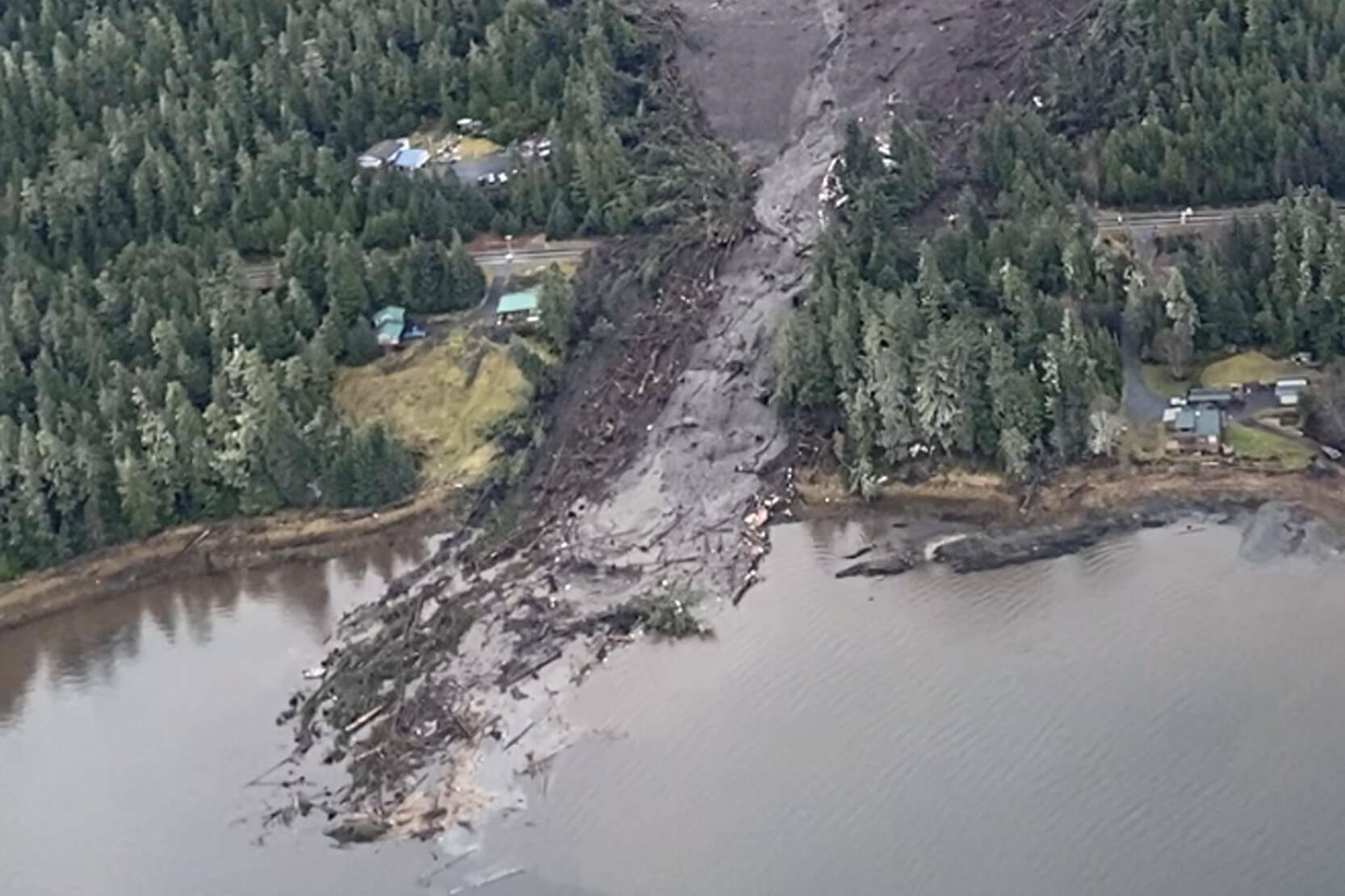Soils saturated by heavy rains unleashed the massive landslide that killed six people in the Southeast Alaska community of Wrangell in November, along with a second huge landslide that rumbled down a nearby slope, said a state report issued on Tuesday.
The report, from the Alaska Division of Geological and Geophysical Surveys, analyzes data collected in the immediate aftermath of the Nov. 20 landslides – from surveys done on the ground, from the air and by lidar, a remote sensing method that uses light to measure the Earth’s surface. Also used for the analysis was weather information and data about the terrain that division scientists collected by lidar just four months prior to the November disaster.
The landslide at Zimovia Highway at the town’s outskirts killed a family of five and one of their adult neighbors. The slide, with material composed of saturated soils and woody debris, started at an elevation 1,490 feet above sea level, spanned about 3,750 feet on the hillside, was 350 feet wide at the point it crossed the road and extended another 500 feet into the waters of Zimovia Strait.
Weather data indicates that 4 inches or more of rain fell in the area in the time leading to the landslide, the report said. The extremely wet soil was the main trigger for the slide, it said.
The second landslide, at Middle Beach Road, occurred an hour or two after the fatal Zimovia Highway slide. The site is a switchback forestry road, and the slide there stranded one person between two crossings, the report said.
Data collected by lidar revealed that the Middle Beach Road slide was 3,600 feet long, covered 600 feet of road and was 150 feet wide at its lower section. Landslide material was composed of large woody debris and saturated soils, with very little rock, the report said.
The work done by division geologists, who arrived at Wrangell on Nov. 22, also revealed that two smaller landslides occurred near the fatal Zimovia Highway slide.
Southeast Alaska, a region packed with steep mountains and covered by a temperate rainforest, is susceptible to landslides, and scientists say vulnerability has increased as climate change brings more extreme precipitation. There were other fatal landslides in Southeast Alaska in recent years: a 2015 slide in Sitka killed three people and a 2020 slide in Haines killed two people.
Landslides threaten people and infrastructure elsewhere in the state, too. Among the vulnerable spots are coastal areas of Prince William Sound, where retreating glaciers and the thaw of high-altitude permafrost has destabilized mountain slopes.
Through its landslide hazards program, the Division of Geological and Geophysical Surveys has been working to identify and map areas of high risk. That work is supported by partnerships and collaborations, which the division is seeking to increase.
The division is applying to the Federal Emergency Management Agency’s Cooperating Technical Partners Program for funding to map existing landslides and analyze slope stability at various sites on Wrangell Island, said Lorraine Henry, a spokesperson for the Alaska Department of Natural Resources, which includes the Division of Geological and Geophysical Surveys. That FEMA program provided funding for mapping work after the Haines and Sitka disasters, she said.
The division got funding from the U.S. Geological Survey for two new weather stations in Southeast Alaska, Henry said, and the USGS has been a partner in research work at Barry Arm in Prince William Sound, a site where there is an identified risk of a large landslide-induced tsunami.
There are other collaborators on existing landslide hazards work, as well as potential collaborators for future research, Henry said. She said an example is the division’s proposal to the National Science Foundation to work with others to improve the state’s understanding of landslides affecting the Haines Highway and the Chilkat Indian Village of Klukwan.
• Yereth Rosen came to Alaska in 1987 to work for the Anchorage Times. She has reported for Reuters, for the Alaska Dispatch News, for Arctic Today and for other organizations. She covers environmental issues, energy, climate change, natural resources, economic and business news, health, science and Arctic concerns. This story originally appeared at alaskabeacon.com. Alaska Beacon, an affiliate of States Newsroom, is an independent, nonpartisan news organization focused on connecting Alaskans to their state government.

